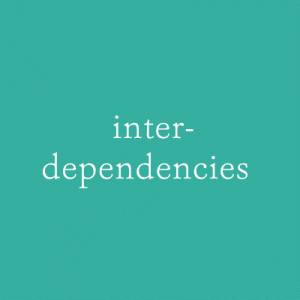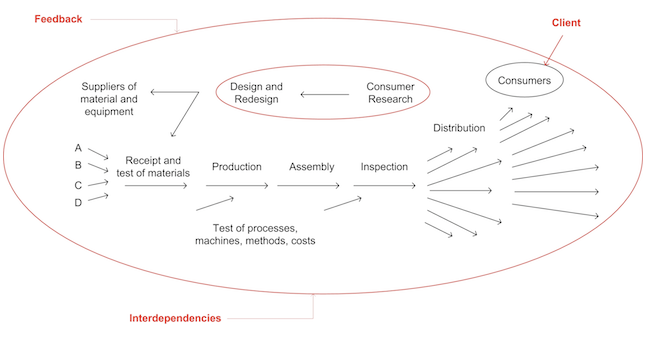Interdependencies

Interdependencies are a fact of life; we would not exist without them. More precisely, the highly complex and nonlinear chain of events that allowed life to emerge and develop over the last 4 billion years is nothing but a network of interdependencies.
Within the framework of organizational studies, the study of interdependencies is aimed at understanding the most suitable ways to orchestrate people’s work. The job #1 of a CEO is to design the correct interdependencies among his people.
A genuine systemic approach to management must be based on designing the most appropriate network of interdependencies suitable to accomplish the goal of the organization. The Organization’s processes are the links in the network that transform inputs into outputs.
Deployment Flow Charts are useful tools. DFCs allow the visualization of “who-does-what-and-with-whom”, hence making clear the “metabolic” process of the network.
The gigantic, unsurpassed, contribution of Dr. Deming to the science of organization, which he called “Quality”, was his unique understanding of the role that variation plays in the management of interdependencies. Statistical Process Control (SPC) and DFCs represent the backbone of a system approach to management.
Indeed, the focus that TOC brings to the management of systems further leverages the paradigm of system stability advocated by the combined use of DFC and SPC. The Thinking Processes Tools (TPT), devised by Dr. Goldratt to enable the visualization and understanding of cause-effect relationships in complex environments, are powerful aids to variation management in human relations.
Although understood by few, the foundation for “change management” lies in the understanding of statistical stability in a network of interdependencies. Stability is the offspring of properly designed interdependencies and a meaningful, gradual, manageable change is possible only within the realm of process predictability. Statistically stable interdependencies then become the prerequisite for the planning and execution of any change management activity aimed at improving performances.
Any change management exercise, at its very core, is an exercise of cognition; an attempt to alter the current, insufficient, process of knowing. Such a process takes place within, and is nurtured by, the network of conversations taking place in the system of interdependencies that make up the organization.
See also networks





